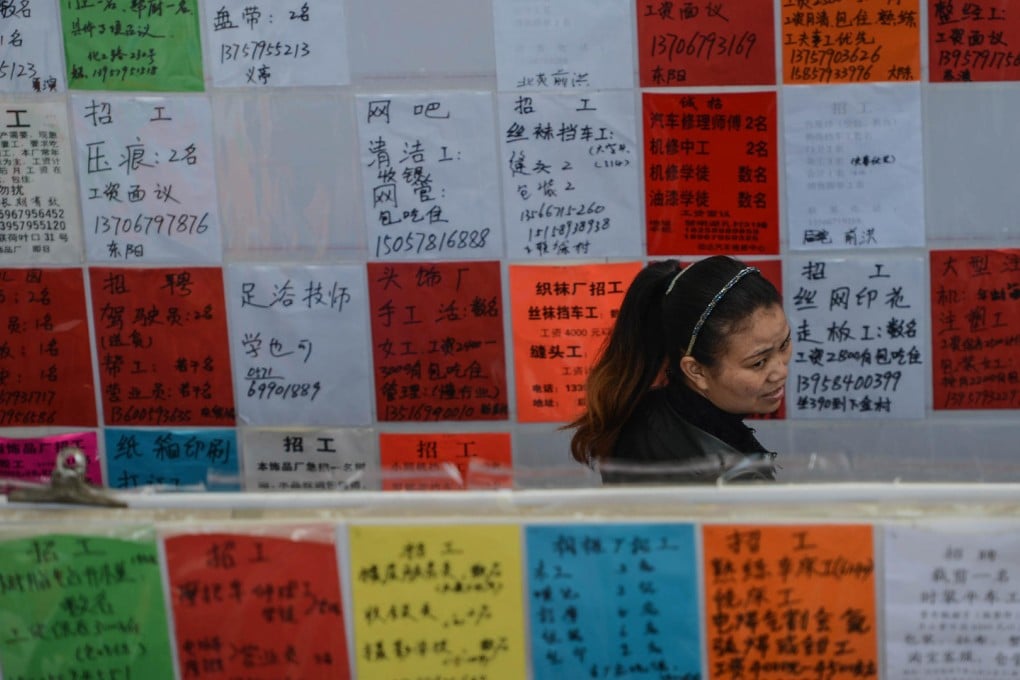China's labour pains: slower economic growth and a cooling job market
As manufacturing falls, stability in labour force will depend on innovation and reforms, experts say

On a recent sunny morning in Beijing, the Chuangxiang job fair was mostly deserted, despite its prime location in Zhongguancun, a cradle of technology start-ups and home to dozens of universities. Several hiring officers stood around chatting, while others sat quietly, looking bored.
Another larger market near the famous Yonghegong Lamasery on the east side of the capital had about two or three visitors at each stand. Even so, about a quarter of the stands did not seem to be leased. Seasonal factors could be at play and some people preferred to search for jobs online, said Zhang Qin, Chuangxiang's marketing manager, but added: "The market is cooling in general."
Zhang's sentiment was echoed by the deputy labour minister Xin Changxing yesterday, who said he was confident of keeping the employment rate stable, but could not be blindly optimistic about job creation.
The urban unemployment rate ticked down slightly to 4.05 per cent at the end of March, from 4.1 per cent at the end of last year, the labour ministry said. The government aims to keep the urban jobless rate below 4.5 per cent.
Job-shedding across the manufacturing sector, as indicated by the HSBC flash purchasing managers index for April, was the worst in 18 months. Data collected among public job services agencies showed both the number of new positions and jobseekers declined more than 15 per cent from a year earlier.
"In recent years, China has seen a rare coexistence of a slide in the economic growth rate and shortage in the labour force," said Chi Hung Kwan, a senior researcher at Nomura's Institute of Capital Markets Research. "The shift of China's labour supply from excess to shortage should be the biggest reason dragging down economic growth."